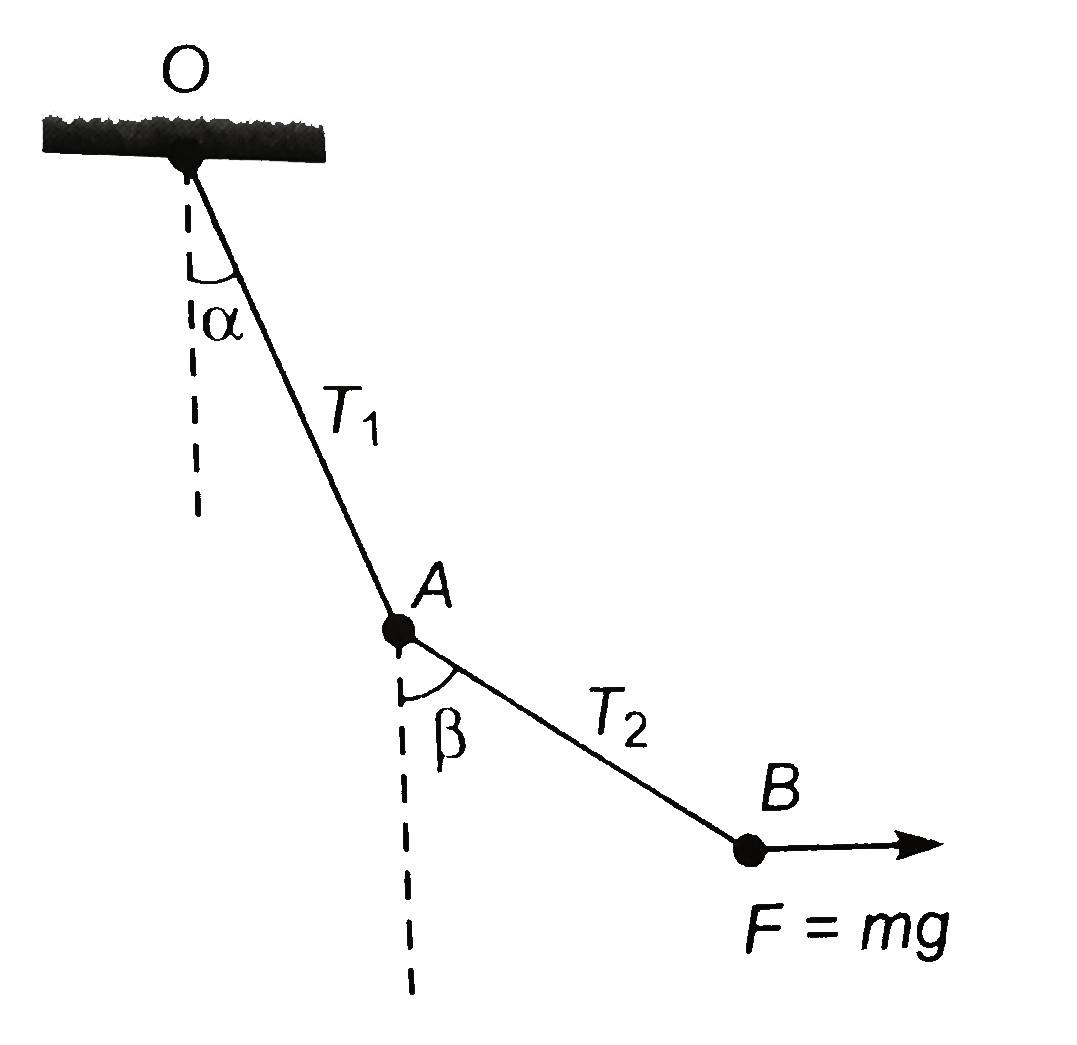The density of a rod AB continuously increases from A to B. Is it easier to set it in rotatio by clamping ilt at A and applying a perpendicular force at B or by clamping it at B and applying the force at A?
Step by step video & image solution for The density of a rod AB continuously increases from A to B. Is it easier to set it in rotatio by clamping ilt at A and applying a perpendicular force at B or by clamping it at B and applying the force at A? by Physics experts to help you in doubts & scoring excellent marks in Class 11 exams.
Updated on:21/07/2023Topper's Solved these Questions
- ROTATIONAL MECHANICSBOOK - HC VERMACHAPTER - ROTATIONAL MECHANICSEXERCISE - Objective 1
26 Videos
- ROTATIONAL MECHANICSBOOK - HC VERMACHAPTER - ROTATIONAL MECHANICSEXERCISE - Objective 2
15 Videos
- ROTATIONAL MECHANICSBOOK - HC VERMACHAPTER - ROTATIONAL MECHANICSEXERCISE - Worked Out Examples
29 Videos
- REST AND MOTION : KINEMATICSBOOK - HC VERMACHAPTER - REST AND MOTION : KINEMATICSEXERCISE - Exercises
51 Videos
- SIMPLE HARMONIC MOTIONBOOK - HC VERMACHAPTER - SIMPLE HARMONIC MOTIONEXERCISE - Exercises
58 Videos
Similar Questions
A force 50 N acts on a block A of mass 3 kg which is in contact with a block B of mass 2 kg, as shown in the figure. Find the forces acting on A and B. Will the same forces act on A and B if instead of applying the force to A, it is applied to B?

View SolutionA force 50 N acts on a block A of mass 3 kg which is in contact with a block B of mass 2 kg, as shown in the figure. Find the forces acting on A and B. Will the same forces act on A and B if instead of applying the force to A, it is applied to B?

View Solution
Knowledge Check
The density of a rod continuously increases from A to B. It is easier to set it into rotation by
Aclamping the rod at A and applying a force F at B, perpendicular to the rodBclamping the rod at B and applying a force F at A, perpendicular to the rodCclamping the rod at mid point of AB and applying a force F at A, perpendicular to the rodDclamping the rod at mid-point of AB and applying force F at B, perpendicular to the rod.The density of a rod AB increases linearly from A to B its midpoint is O and its centre of mass is at C. four axes pass through A, B, O and C, all perpendicular to the length of the rod. The moment of inertial of the rod about these axes are IA,IB,IO and IC respectively.
AIA>IBBIC<IBCIO>ICDAll of theseThe density of as rod graduallly decreases from one end to the other. It is pivoted at an end so that ilt can move about a vertical axius through the pivot. A horizontal force F is applied on the free end n a direction perpendicular to the rod. The quantities, that do not depend on which end of the rod is pivoted are
Aangular accelerationBangular velocity when the rod completes one rotationCangular momentum when tehrod competes one rotationDtorque of the applied force
A uniform rod AB of mass m and length l is at rest on a smooth horizontal surface. An impulse J is applied to the end B perpendicular to the rod in horizontal direction. Speed of the point A of the rod after giving impulse is:
View SolutionThe metal blocks A and B of masses 2 kg and 1 kg , respectively are in contact on a frictionless table A constant horizontal force of 3 N is applied to the block A . Calculate the force of constant between the two blocks . If the same force is applied to the block B then what will be the force of contact ? Can you explain the difference ?
View SolutionThe adjacent figure shows a non-uniform metre stick AB having the linear mass density variation λ=λ0x , where λ0 is a constant and x is the distance from end A, placed on a smooth horizontal surface. In the first experiment, the rod is pivoted at A and force F is applied perpendicular to the rod at the other end B and in the second experiment, the rod is pivoted at B and the force is applied perpendicular to the rod at the end A. If in the first case angular acceleration is αA and in the second case it is αB then

View SolutionOne end of meter stick is pinned to a table to that stick can rotate freely in aplane parallel to the table surface. Two horizontal forces are applied to the stick such that the rod does not rotate at all. One force has a magnitude of 2N and is applied perpendicular to the stick at the free end. The other force has a magnitude of 8N and acts at 30∘ with respect in the length of the stick. At what distance from the pinned end is the 8N force applied.
View SolutionTwo particalA and B each of mass m are kept stationary by applying a horizontal force F=mg on partical B as show in figure .Then

View Solution
